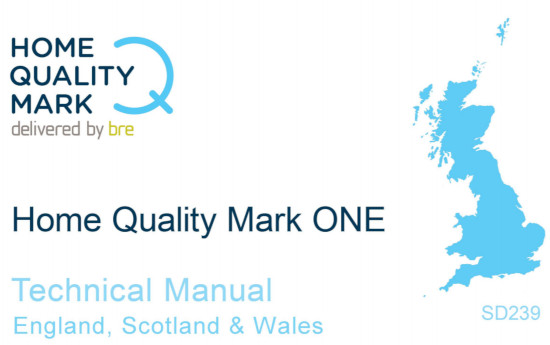HQM ONE
Contents |
[edit] Introduction
Building more high-quality new homes that fit our current and future needs is a national priority. BRE has developed the Home Quality Mark (HQM) to provide developers with the tools and framework to differentiate, prove and communicate the benefits of their homes.
This then gives consumers, clients, financiers and the wider sector the information and reassurance about the homes they live in, finance, procure, plan or own. It provides a solution to a number of the major challenges in housebuilding today. It could be called the ‘TripAdvisor for new homes’ being a valuable tool in improving the culture around new house building.
The Mark recognises good practice guidance, processes and standards that the industry has to offer, drawing them all together in a way that can be understood by people outside the construction industry. Ultimately, building high quality new homes that are accepted by communities is the key to delivering the numbers of new homes that the Government has set out.
The HQM ONE technical manuals for new homes are now available for England, Scotland and Wales. HQM ONE builds on the beta version of the scheme, which has been operating since early 2016. BRE has received significant amounts of feedback in a variety of forms from many different people and organisations, all of which have had a hand in its evolution.
[edit] What is new about HQM ONE?
Key areas of difference to the beta version of the scheme include:
- An amended scoring / star rating system.
- A strengthening of the scheme’s quality baseline (in terms of design and construction quality).
- Introduction of updated science to keep it in line with other BREEAM schemes.
- Updates in response to feedback from the beta scheme.
- Adaptions to make the scheme usable for developments in Wales and Scotland.
HQM remains a flexible standard, suitable for all types of new homes including; private sale, all types of rental, low-rise, high-rise, urban, rural, traditional construction, modern methods / offsite, built by large or small developers and everything in between.
[edit] When can HQM ONE be used?
Registrations for HQM ONE are open from the 24 August 2018, when BRE will also be releasing the supporting tools required to complete an HQM ONE assessment.
More details can be found at: http://www.homequalitymark.com/standard
[edit] Related articles on Designing Buildings
- 5 things you need to know about HQM ONE.
- BRE articles on Designing Buildings Wiki.
- BRE Buzz articles on Designing Buildings Wiki.
- BRE Buzz.
- BREEAM.
- Differences between HQM Beta and HQM ONE.
- Flood level.
- Home Quality Mark.
- Improving home quality with HQM ONE.
- Making energy calculations more accurate with HQM.
Featured articles and news
RTPI leader to become new CIOB Chief Executive Officer
Dr Victoria Hills MRTPI, FICE to take over after Caroline Gumble’s departure.
Social and affordable housing, a long term plan for delivery
The “Delivering a Decade of Renewal for Social and Affordable Housing” strategy sets out future path.
A change to adoptive architecture
Effects of global weather warming on architectural detailing, material choice and human interaction.
The proposed publicly owned and backed subsidiary of Homes England, to facilitate new homes.
How big is the problem and what can we do to mitigate the effects?
Overheating guidance and tools for building designers
A number of cool guides to help with the heat.
The UK's Modern Industrial Strategy: A 10 year plan
Previous consultation criticism, current key elements and general support with some persisting reservations.
Building Safety Regulator reforms
New roles, new staff and a new fast track service pave the way for a single construction regulator.
Architectural Technologist CPDs and Communications
CIAT CPD… and how you can do it!
Cooling centres and cool spaces
Managing extreme heat in cities by directing the public to places for heat stress relief and water sources.
Winter gardens: A brief history and warm variations
Extending the season with glass in different forms and terms.
Restoring Great Yarmouth's Winter Gardens
Transforming one of the least sustainable constructions imaginable.
Construction Skills Mission Board launch sector drive
Newly formed government and industry collaboration set strategy for recruiting an additional 100,000 construction workers a year.
New Architects Code comes into effect in September 2025
ARB Architects Code of Conduct and Practice available with ongoing consultation regarding guidance.
Welsh Skills Body (Medr) launches ambitious plan
The new skills body brings together funding and regulation of tertiary education and research for the devolved nation.
Paul Gandy FCIOB announced as next CIOB President
Former Tilbury Douglas CEO takes helm.
UK Infrastructure: A 10 Year Strategy. In brief with reactions
With the National Infrastructure and Service Transformation Authority (NISTA).
























